To qualify for drawback money, numerous documents were required. All were printed forms of various sizes, usually having little or no ornamentation. Several typefaces may be found on a single certificate, and many contain printing on both the front and the back. These forms remained fairly standardized between 1790-1860, with minor variations in size and style. Most of these documents were obtained through the customhouse, and carried the signatures of the collector and naval officer at the issuing port. Others would come from U.S. Consuls at foreign ports.
During its formative years, America did not have many finished products to export. Most domestic products and raw materials did not garner high profits for their exporters. One way in which Americans could make large profits, however, was to participate in the carrying trade, in which the more expensive products from the British and French West Indies (such as sugar) were bought by Americans and resold to Europeans. The first tariff law of 1789 recognized the importance of this carrying trade by providing for a refund, or Drawback, of virtually all duties paid on goods that were imported only to be exported within the year. Drawbacks made the carrying trade profitable.
Initial use of Drawback was not great, but when war broke out between England and France in 1793, Europe’s need of the American carriers increased. To retain their neutral status, Americans had to declare West Indian goods in the United States before re-exporting them to Europe as American goods. By 1798, the New York Customhouse was refunding as Drawbacks more than one-third of all duties collected.
To claim drawback monies, the importer first needed to obtain an entry of merchandise and one that certified his intention of exporting the cargo listed on the form of entry. If the goods were transferred within the united States, the new owner would also need to attest that he intended to export the cargo. If the cargo was transported along the coast, the owner had to obtain forms permitting him to do so. Lists of the transported cargo would be made at the original port and would be checked at the next port, providing that the owner had obtained a form permitting him to unload the goods at those ports. The maximum number of coastwise transfers an owner could make was two, after which the Drawback could not be claimed. When the goods were exported, their owner could apply for a debenture in the amount of the Drawback, but he was required to sign a bond for twice that amount. The bond was released if proof of exportation, usually in the form of sworn statements by the consignees, the principal officers of the delivery vessel, and the American consul at the foreign port, arrived within the time specified with the bond, unusually one or two years. Notary documents, swearing compliance with drawback regulations, might also be required to support an exporter’s request for a rebate.
No Drawback could be obtained on some goods (a changing list) or on packages broken or goods damaged while in the United States. Drawbacks did apply to imported goods that were used in American products that were exported, such as the molasses-rum conversion.
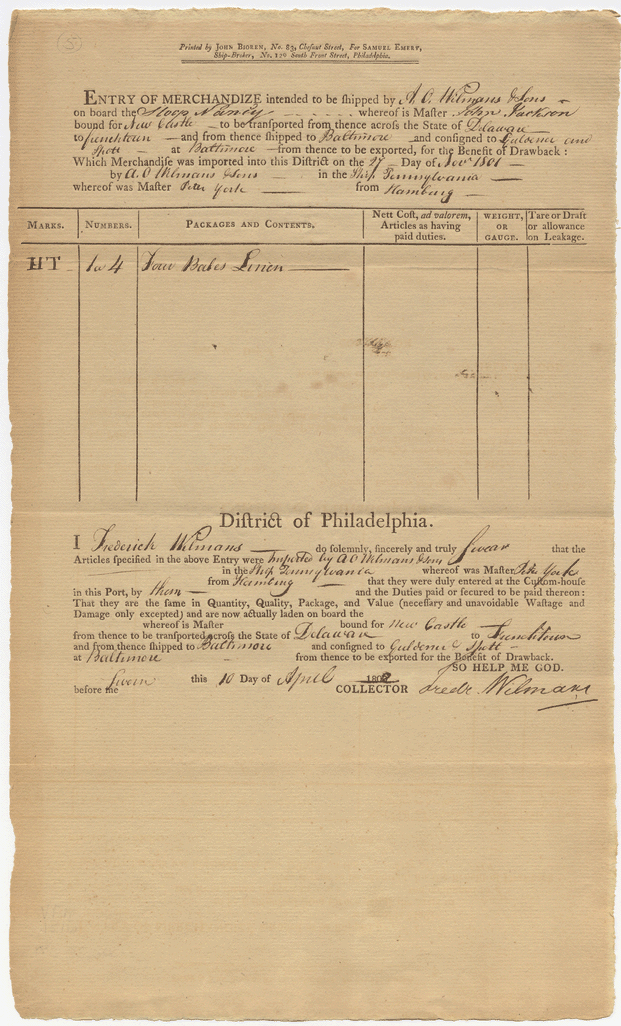
Entry of Merchandise CertificateThis form indicates an Entry of Merchandise for coastwise transport. It states that the importers are in possession of goods that arrived in Philadelphia from Hamburg, Germany, and that they intend to ship that cargo to Baltimore for exportation,. This one-page printed document details the cargoes movements as affirmed by the Collector, and was required in order to retain the right to drawback.
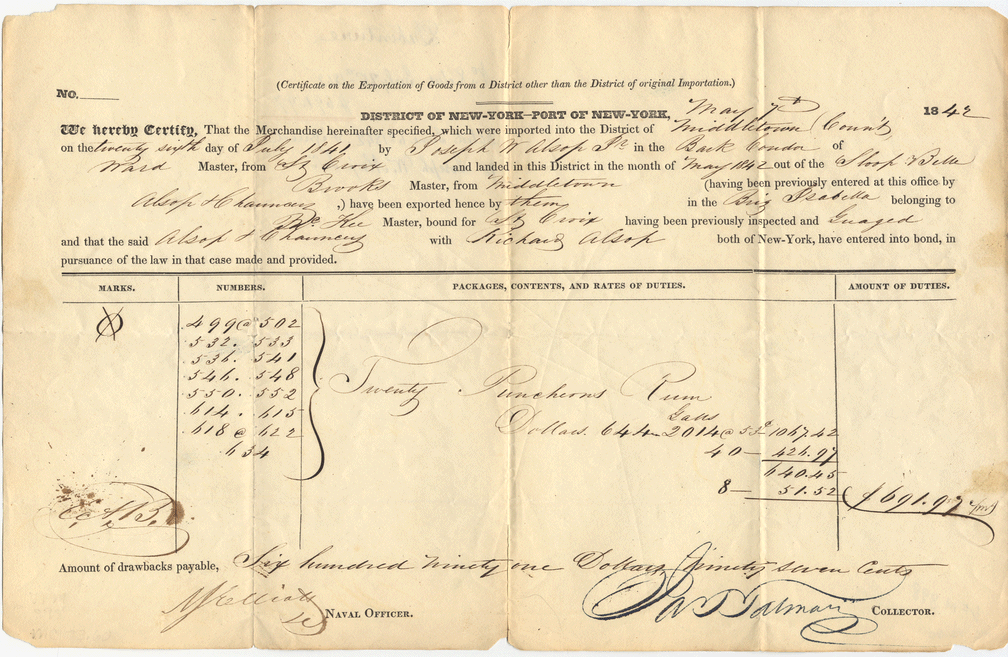
Certificate for Exporting Goods From a District Other Than the One of Original Importation: This form notes the district of importation, the district of exportation, the final destination, and the master(s) and vessel(s) employed in transporting the cargo. The cargo was listed below the initial statement, with the amount of drawback appearing near the bottom of the certificate. Issued through the customhouse, the form carried the signatures of the collector and the naval officer.
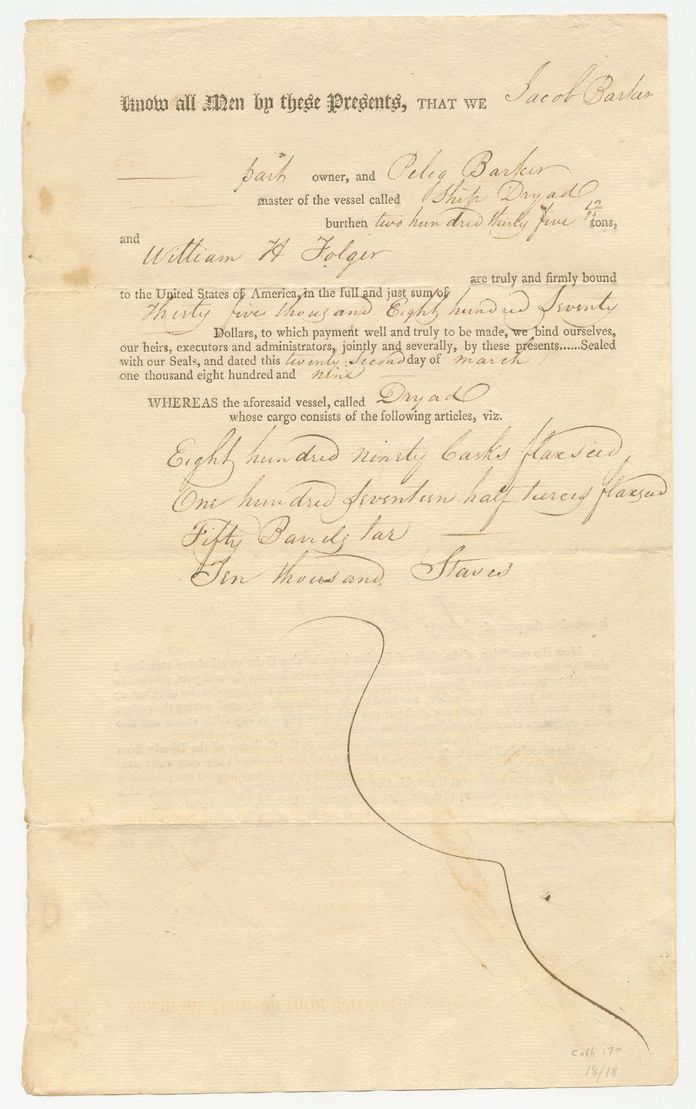
Bond on Exportation of Goods Eligible for Drawback: This document indicates that Jacob Barker, Peleg Barker, and William H. Folger bound themselves for $35,870.00 to the United States in order to obtain drawback money for the goods exported and described in the Bond. The obligation was voided if or when proof of the cargo’s arrival in Fayal was produced within one year. This was a one-page document, printed on both sides, containing the signatures of the bonded parties, the name of the vessel transporting the cargo, the destination, and the conditions for the proper execution of the Bond which were explained on the backside of the form. The Bond is essentially a statement by the receiver of the drawback that they will stand in bond for twice the amount of the debenture if the conditions specified within were not met.
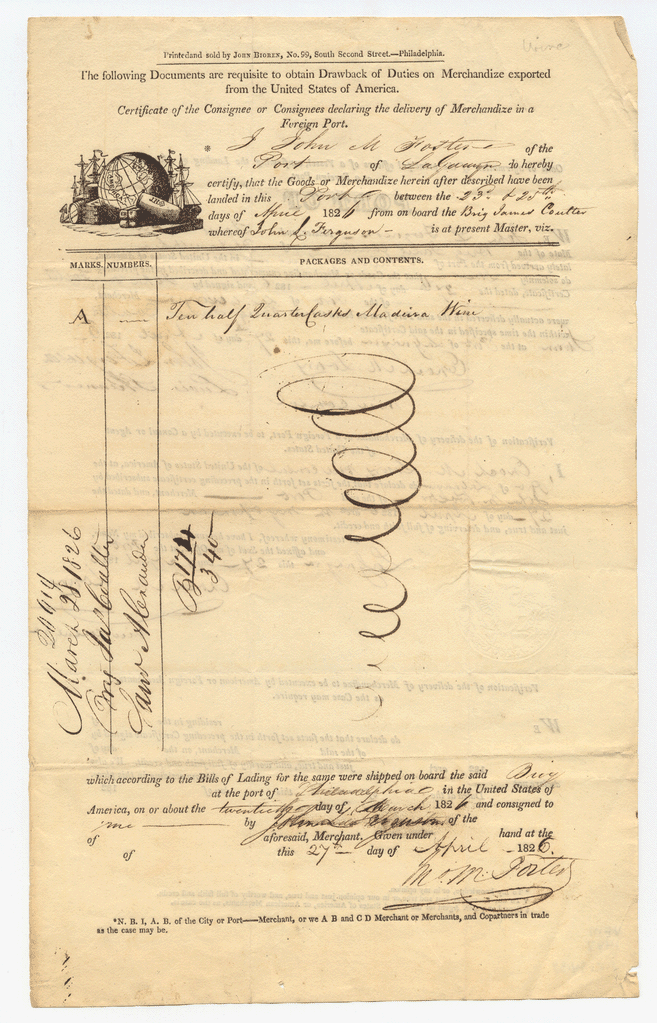
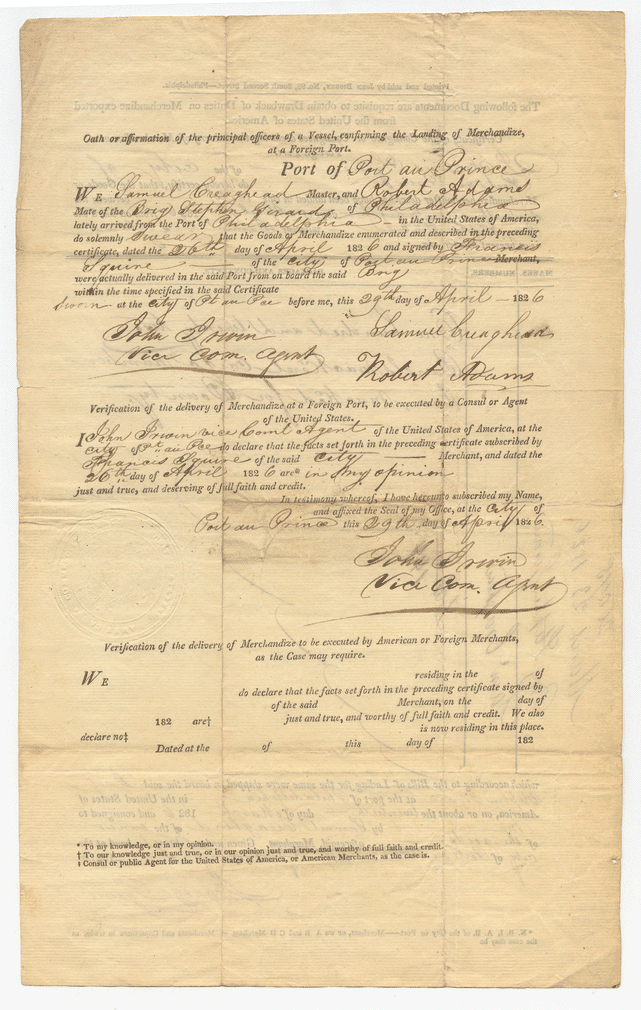
Debenture Certificate: This is a one-page document, printed on both sides, containing four major parts: the Certificate of the Consignee, Oath of the master and mate, Consul’s Certificate, and the Merchant’s Certificate. The words “Debenture Certificate” generally do not appear on the document. When properly executed and returned to the exporter, the Debenture Certificate is final proof that those who exported the goods have complied with current drawback conditions, and can now be released from all required bonds or obligations to the United States. The illustrations show both sides of the document, which was probably executed as follows: On 23 March 1826 the master of the brig Stephen Girard signed in the margin, indicating that the cargo described therein was aboard. On 26 April 1826 the consignee signed the Certificate, stating that he had received the cargo at Port-au-Prince, which was unloaded between the sixteenth and twenty-fifth of April. Three days later the master and mate of the Stephen Girard sign the Oath affirming the consignee’s statement. That same day the Vice Consul of the U.S. added his signature to verify the delivery of the cargo and confirm the accuracy of the Debenture Certificate. (Had there been no Consul assigned to the port of discharge, an authorized merchant would have signed the verification instead.)
